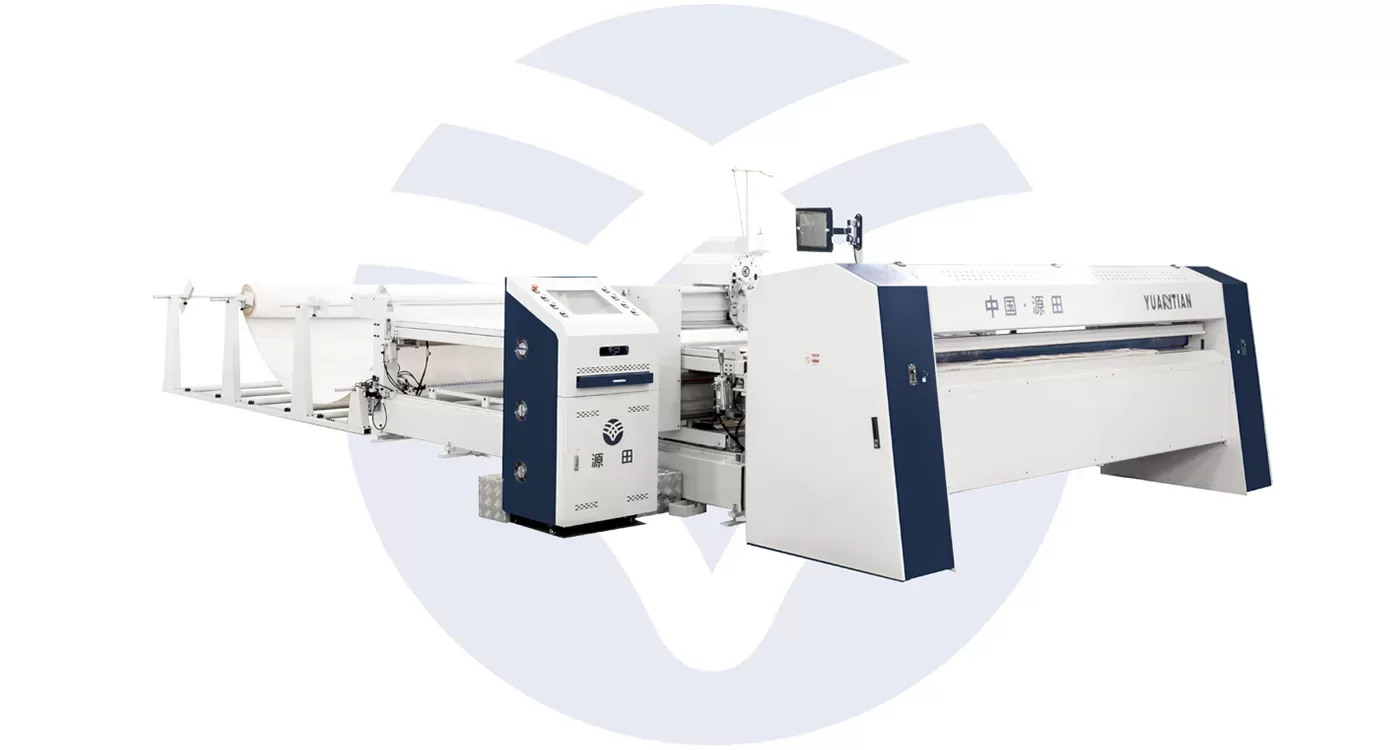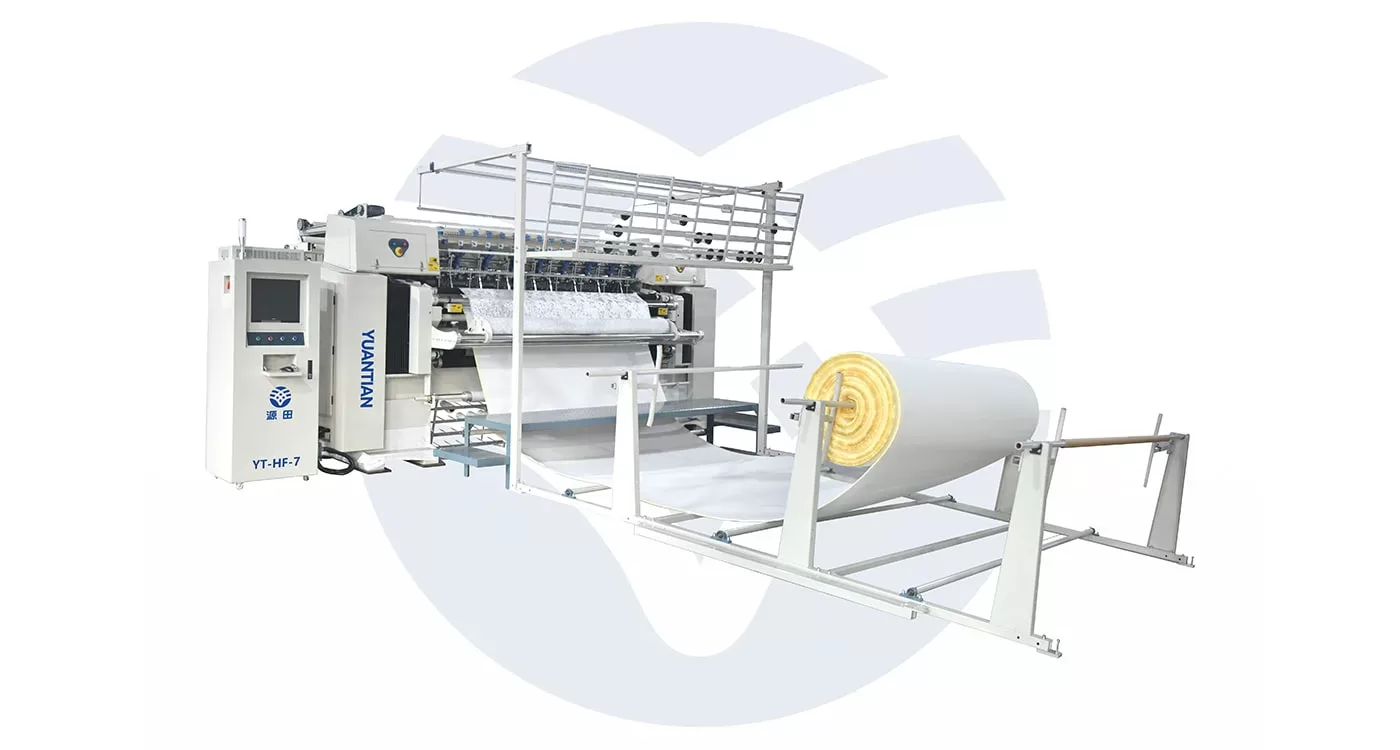- Home » Multi-Needle vs. Single-Needle Quilting Machines: A Detailed Comparison
Quilting machines have evolved significantly over the years, offering quilters a variety of choices tailored to their specific needs. Among the most common classifications of quilting machines are multi-needle and single-needle machines. Each type comes with its own set of features, advantages, and disadvantages that cater to different quilting styles, volumes, and professional levels.
This detailed comparison explores the pros and cons of both multi-needle and single-needle quilting machines to help you determine the best option for your quilting projects.
What Is a Single-Needle Quilting Machine?
As the name implies, a single-needle quilting machine uses a single needle. These machines usually serve to make very intricate designs on quilts where precision and great control are needed. They could be domestic or industrial and may or may not be fully automated.
Pros of Single-Needle Quilting Machines
Precision and Detail: Single-needle quilting machines are excellent in giving out the best detail, ideal for quilters who are into minute details. Because the machine uses one needle, it can be guided carefully by a user through complex patterns for high accuracy.
Ease of Use for Beginners: Single-needle machines are typically much easier for the complete novice or hobby quilters. Most often, they will provide for manual control and afford an individual the ability to work at a personal pace while perfecting certain techniques.
Versatility in Design: Quilters working with a single-needle machine may pursue several quilting techniques, which include free-motion quilting and straight-line stitching. This allows great diversity in creative expression.
Affordability: Single-needle machines are less expensive than multi-needle machines. For quilters who are working on smaller projects or have small budgets, these machines allow them to take part in quilting economically.
Compact Size: Most single-needle machines are compact and easily storable, as such, they would be perfect for quilters who do not have sewing rooms. These machines are lightweight and compact, thus requiring less space-commendable for those who have limited workspace.
Cons of Single-Needle Quilting Machines
Slower Production Speed: One major drawback of using single-needle quilting machines is that they tend to have rather slow production speeds. With only one needle used, stitching large quilts or meeting high volumes of quilts will surely take time to finish.
Limited for Commercial Use: Single-needle machines do well for small-scale or personal projects, not truly intended for high output, as would be necessary for a commercial application. Businesses or professionals interested in churning out a number of quilts may find the single-needle machine somewhat less efficient in this regard.
Manual Operation and Labor-Intensive: even though single-needle machines give good control and accuracy, they also involve more manual operation. This is exhaustive to the body, especially for big projects that may involve a great deal of quilting.

What is a Multi-Needle Quilting Machine?
This is more industrial and increases the efficiency of quilting. These machines could come with a number of needles operating inside them, two to a couple of dozen-and these would be enabled in order to allow the quilters to create difficult and big-scale designs in one-fourth of the usual time that it will take.
Pros of Multi-Needle Quilting Machines
Faster Production Speed: Multi-needle machines have their chief advantage in speed. Since there are many needles, all of them will function simultaneously, therefore, the machine is able to quilt a few lines of stitching at a time. This entails a greater production speed, making multi-needle machines particularly suitable for commercial quilting processes or large projects.
Suited for Mass Production: Businesses or professional quilters that require a large number of quilts may not do without a multi-needle quilting machine. These are highly effective because they quilt more fabric in less time, enabling companies to meet big orders in short periods of time.
Advanced Automation and Customization: Several multi-needle machines come with advanced automation features, including computerized capabilities that enable pre-programmed quilting designs. This feature would enable the quilter to achieve very consistent results with minimum manual intervention, even for more intricate patterns.
Uniformity in Quilting Patterns: Multi-needle machines are automated and stitch several lines at a time, hence, they provide consistency in the pattern one is trying to quilt. This uniformity is quite important on large production runs when the identical look of the quilts is required.
Reduced Manual Labor: Multi-needle machines take off the quilter some of the manual labor involved. Automation takes up most of the work in quilting, leaving a person in charge to attend to design and any other aspect that may see such production complete. This mostly becomes very beneficial for quilters with physical limitations and those who would want to scale up their operations.
Cons of Multi-Needle Quilting Machines
High Cost: Multi-needle quilting machines are more expensive than single-needle ones. Advanced technologies and automation features, which enable these machines to handle multiple needles together, have driven up their cost. This becomes an obstacle for smaller enterprises or hobbyists.
Complexity and Steeper Learning Curve: Efficiency with multi-needle machines means higher complexity with setup and operation. Advanced features on multi-needle embroidery machines overwhelm a beginner, and it may take some training or experience before he can learn how to operate the machine.
Bulky and Requires Space: Multi-needle machines are big and need space for a proper setup, this can be a headache when one is quilting at home or in an inadequately small space.
Less Customization for Intricate Designs: Multi-needle machines are excellent regarding uniformity and speed, however, they normally are not appropriate for very intricate or custom quilting designs. The automatic nature of this machine restricts the user from manually controlling the quilting process, which is able to affect the delicacy of a pattern’s outcome.
Maintenance and Repairs: Since the multi-needle machines are more complex, they may require more frequent maintenance with specialized repairs. This increases the overall cost of ownership, especially for those quilters who may not have easy access to technicians who can service these machines.

Conclusion
Your quilting machine choice between a multi- and single-needle will depend on your volume, expertise, and quilting goals. Single-needle machines can be ideal for providing the highest level of precision, adhering to tight budgets, and offering overall versatility for hobbyists, amateurs, and smaller projects that are less labor-intensive. Multi-needle machines are able to run at incredible speeds and are efficient, so they are best suited for commercial quilters and those concerned with bulk production.
Both types of machines come with unique benefits and challenges, and understanding these will help you make an informed decision based on your specific quilting needs. Whether you’re a hobbyist looking for creative freedom or a professional seeking to maximize output, there is a quilting machine designed to meet your requirements.
Связанные с ними товары

















